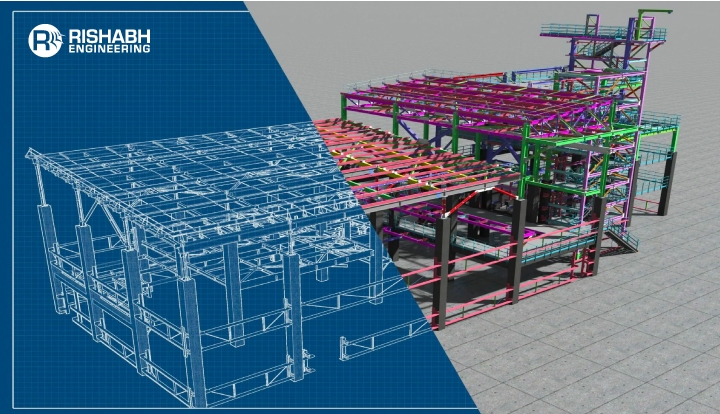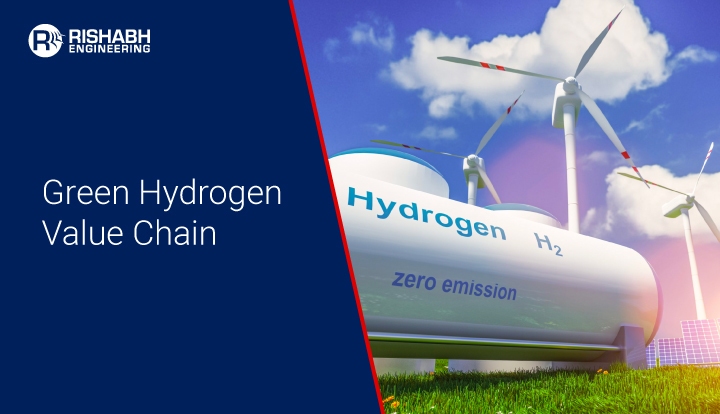
Floating, Production, Storage & Offloading Essentials
From structural stability and hull conversion to process safety and topside module configuration, every component must be engineered to withstand offshore conditions while meeting production, storage, and regulatory requirements. A multidisciplinary approach ensures that marine, process, piping, electrical, instrumentation, and safety systems are designed seamlessly, enabling FPSOs to operate reliably over decades in remote and challenging environments.
In this blog, we’ll discuss the specifics about What is an FPSO, how does it work, its components, types, advantages & some disadvantages, along with how a multidisciplinary design engineering company can help.

What is an FPSO (Floating Production, Storage, and Offloading) Vessel?
FPSOs (Floating Production, Storage, and Offloading) are sea-based floating vessels for oil production, storage, and offloading. They permit the processing and storage of oil and gas. FPSOs are widely utilized in the offshore industry as a principal oil and gas production, processing, and storage technique. Oil and gas corporations typically lease them. The boats contain diverse processing equipment that aids in the separation, storage, and offloading of crude oil and gas collected from subsea oil wells or platforms. After processing the oil and gas, FPSOs store it safely before offloading it into a tanker or transporting it via pipeline.
How Does an FPSO Work?
FPSOs are meant to gather hydrocarbons produced by themselves or from nearby platforms or subsea templates, process them, and store oil until it can be offloaded onto a tanker or, less commonly, supplied via a pipeline. They are suited for a wide range of water depths and environmental conditions and can be constructed to operate for at least 20 years.
FPSOs are used in the following situations:
- Marginal fields: Fields with a reserve of 15 to 20 years
- Remote wells: Wells that are far from onshore facilities.
- High-cost onshore facilities: While constructing onshore facilities is expensive, FPSOs are cost-effective units since operators move into deeper waters.
Floating Production, Storage, and Offloading Vessel Components
The main parts of FPSO include:
- Hull: It is the top of the ship above sea level, and it is either newly built or made from the conversion of existing tankers. Often, hulls are designed to match project-specific conditions, which can vary greatly depending on the regions in which it will operate.
- Mooring System: This equipment ensures that the FPSO safely stays in place despite whatever natural forces, waves, winds, and currents it faces. It comprises of mooring lines, anchors, and connectors.
- Topside: It is the gas processing unit for the FPSO at the top of the vessel, and it is designed & constructed for specific offshore platforms while adhering to refinery standard specifications (API & ASME).
- Risers: This component allows the vessel to move vertically and laterally. The flexible steel reinforced risers are designed to absorb any motion that affects the vessel’s position by waves.
- FPSO Turret: It is an integrated part of the FPSO hull. It helps the hull weathervane around the mooring system and the mooring line, allowing the FPSO to rotate freely while mooring to different seafloor locations. This is especially true for adverse weather conditions on the vessel. Furthermore, detachable turret systems allow the turret to be detached from the vessel while remaining linked to the seabed’s mooring lines. This is especially effective in situations like hurricanes and storms, where the vessel must respond swiftly to external risks.
- Gas, water, and oil separator: Water, gas, and oil have different densities, which implies that they can be split into a special separator. And, with gas rising to the top, water at the bottom, and oil staying in the middle.
Types of FPSO
FPSOs are classified into four types based on their processing & storage capabilities, as listed below;
- Floating, Storage, and Offloading (FSO) unit
- Floating, Drilling, Production, Storage, and Offloading (FDPSO) unit
- Floating, Production, Storage, and Offloading (FPSO) unit
- Floating, Storage, and Regasification Unit (FSRU)
Advantages of Floating Production, Storage, and Offloading (FPSO) Units
- Cost-effective: FPSOs are less expensive than typical offshore oil and gas installations and offer more flexible leasing arrangements.
- Flexible: FPSOs can connect to any pipeline and be relocated if an oilfield is depleted. This saves time and money by removing the need to construct costly permanent pipelines and infrastructure.
- Safe: FPSOs are safer than conventional methods. They can also be unplugged from the pipelines and oil wells attached to them.
- Timesaving: FPSOs can be extremely effective in deep ocean and remote regions where seabed pipelines are not viable.
- Environmental considerations: Regarding environmental concerns, FPSOs provide major advantages.
Disadvantages of FPSOs
- Construction time: FPSOs take around 1-2 years to build or convert and require a costly and timely environmental study for a specific field once accepted.
- Maintenance: FPSOs require careful maintenance and inspection to ensure their optimal performance.
How a Multidisciplinary Design Engineering Company Help with Designing Modules/Components of FPSO?
A multidisciplinary design engineering company plays a critical role in ensuring that FPSO modules and components are optimized for performance, safety, and cost-efficiency:
- Hull & Mooring System: Structural and naval architects design the hull and mooring systems to withstand dynamic offshore forces, ensuring long-term operability.
- Topside Process Modules: Process engineers develop layouts for separators, gas compression, water treatment, and flare design systems, while piping engineers handle routing and stress analysis. Explore this blog to discover how Rishabh Engineering’s Skid Engineering Services support FPSO topside module design.
- Risers & Turret Systems: Mechanical and structural specialists ensure flexibility and durability of risers, while turret systems are designed for smooth wind indicators in harsh weather.
- Instrumentation & Electrical Systems: Engineers integrate advanced monitoring, control, and power distribution systems for safe and continuous operation.
- Safety & Compliance: HAZOP studies, fire safety systems, and environmental safeguards are incorporated to align with international standards like API, ASME, and ABS.
By leveraging cross-disciplinary expertise, multidiscipline design engineering teams design FPSOs that balance efficiency, safety, and sustainability while reducing operational risks.
Final Words
The success of any FPSO project lies in its detailed planning and execution. A multidisciplinary engineering partner ensures seamless integration of structural, process, piping, electrical, and safety systems—helping operators maximize production efficiency while minimizing lifecycle costs. To explore what type of specialized engineering support we can offer to strengthen your FPSO project, discover our multidiscipline design engineering services.
Unlock The Full Potential Of Your FPSO Project
Our multidisciplinary design engineering company can help you design FPSO packages.
Related Blogs
Related Blogs
Best Structural Engineering Software for Accurate Analysis
Finding tools that simplify and improve the accuracy of the…
Detailed Engineering Considerations for Project Success
Engineering projects today require meticulous planning and execution across various…


